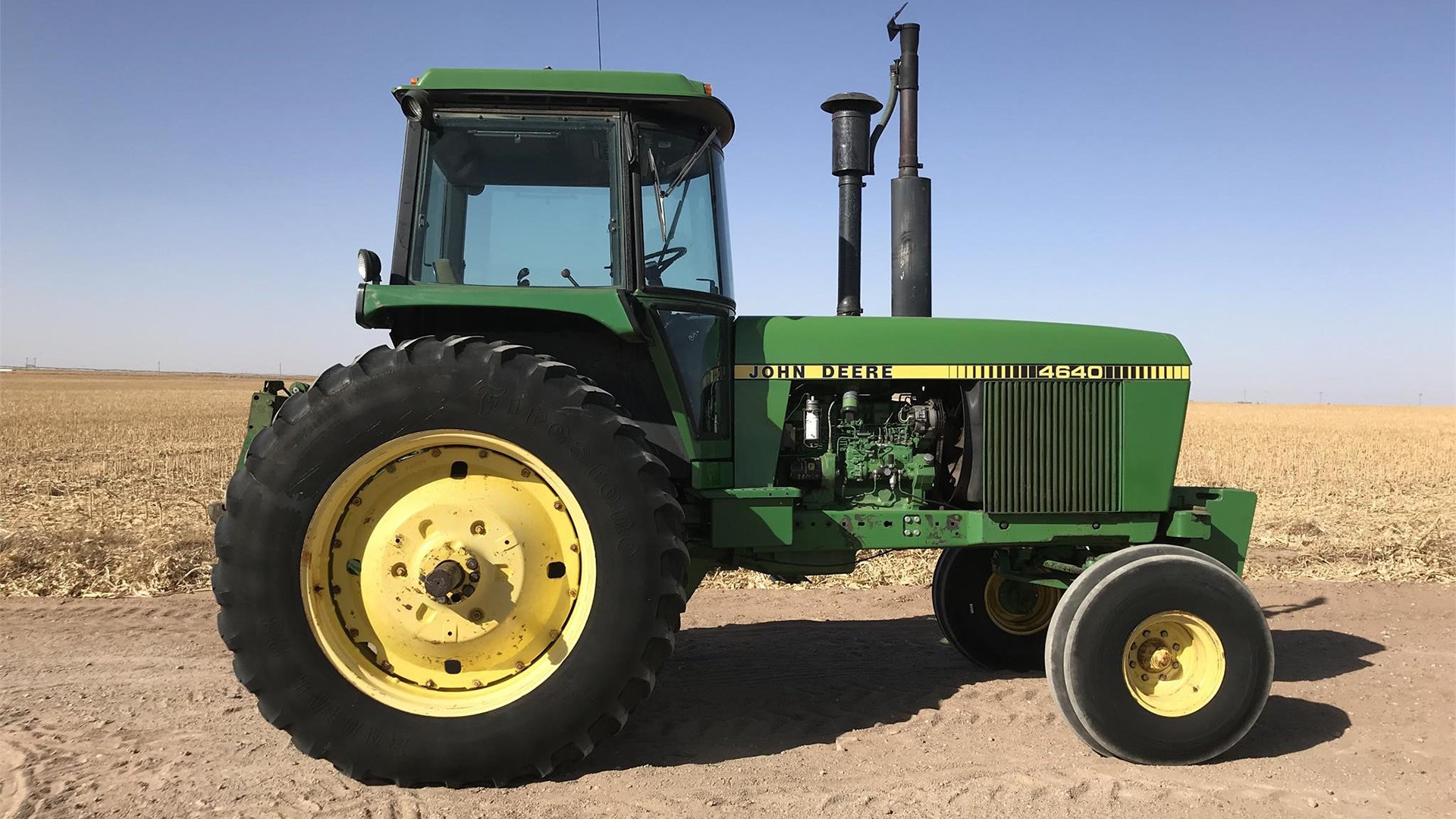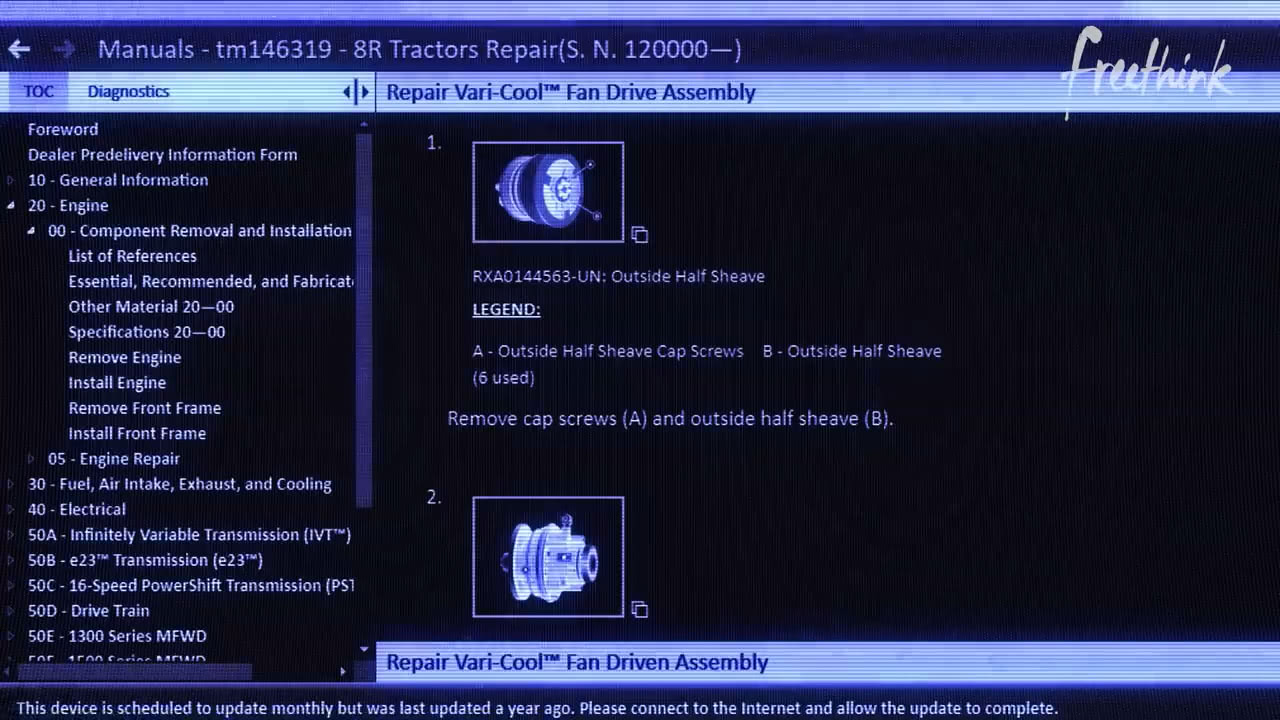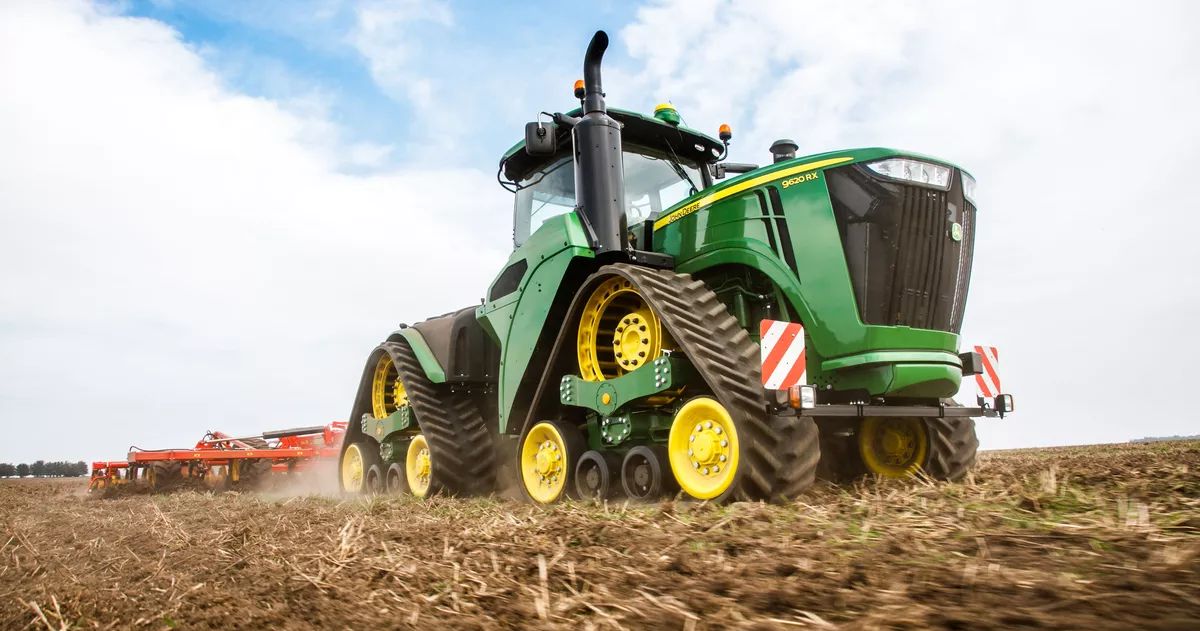
People began to grow food about 10,000 years ago , but the ancient Sapiens could not imagine that in the future, to harvest corn, they would first have to install a pirated Ukrainian firmware , and then sort out the OBD-II protocol trouble codes.
Typically, "hackers" are computer security professionals looking for vulnerabilities in IT systems. But in the United States, ordinary farmers are now forced to break into their own equipment just to keep it working.
Habré has already writtenabout this absurd situation. John Deere and other major manufacturers make it as difficult for farmers to repair themselves as possible. The logic is about the same as that of Apple: they say, only certified specialists from branded centers can provide high service, so diagnostic tools cannot be distributed to everyone, but only to authorized dealers.
Farmers are only the first to be hit. This is a kind of vanguard of resistance. In the future, not only farmers, but everyone else may become victims of such a policy, if corporations introduce similar restrictions on the repair of cars, laptops, smartphones, TVs. The whole world is gradually becoming "smart", so the list will expand. Each of us will have to make a choice: either submit to the terms of the corporation to use its device, or become a hacker.

John Deere is the American version of the Belarus tractor. Pictured here is an old school 1977 model that can be repaired by hand. For this reason , prices for old tractors have now increased.
The products we use in everyday life are becoming more technological, so we are increasingly dependent on computer systems. Companies understand this - and strive to retain control of the software after the sale so that all renovations are profitable. There are three main items of income: 1) sale of components; 2) service centers; 3) certification of partners. At their expense, the manufacturer significantly increases the margin. Instead of the low margin of 5-10% of the usual "dumb" manufacturer, advanced modern business gets 40-50% from each device due to the added value. This is how the top brands of the 21st century such as Tesla and Apple differ from conventional manufacturers such as Ford and Huawei: they build their business on intellectual property, which is far more profitable than a “dumb” manufacture.

Touchscreen in the salon. In a modern John Deere tractor, all systems are controlled by a computer.But
due to the fact that all systems are controlled by a computer, the farmer cannot repair the equipment on his own, because he does not have access to proprietary diagnostic tools. He will have to deliver the tractor to an authorized dealer (tens of kilometers away) or wait for a technician from John Deere to arrive.

Dave Alford is studying the program code guide to find out the cause of the breakdown of the John Deere 8520T tractor, source
For example, one of the farmers told a case: the drive belts, judging by the on-board computer, lost their tightness - and we had to wait all day for the official representative of the company to arrive: “The technician has arrived. It took him several hours to diagnose that one sensor had failed. Just one small sensor, and it cost $ 120, ”complains a thrifty farmer.
Farmers were the first to fall victim to the "refurbishment ban" as much of the farm equipment requires constant maintenance.
Companies like John Deere make “unauthorized” repairs as difficult as possible by contacting authorized dealers. Farmers view this corporate strategy as an attack on their legal property rights. Therefore, a massive hacking of tractors began.
Now all over the American hinterland, disgruntled farmers are using firmware from Eastern Europe (they say that from Poland and Ukraine) to hack . Hacker software is sold on forums, where the entrance is by invitation.


DIY-forum for farmers
Some programs are also in the public domain. For example, the PolyCAN diagnostic tool is being developed by California Polytechnic State University with financial support from iFixit. The educational project is subject to an exemption from the DMCA, which means that it can be used to hack a tractor, but only for educational purposes, not commercial.

J1939 OBD II connector pinout and diagram
Clandestine sites sell other diagnostic utilities, payload files, and Electronic Data Link (EDL) firmware that communicate with the tractor controller. There are also license key generators, maximum speed limit modifiers, reverse engineering cables that allow the tractor to be controlled from a computer.

And this is not a violation of the law. In October 2015, all ground vehicles, including tractors, were exempted from the DMCA , so it is now legal to break into your vehicle.
While pirated firmware is legal, that doesn't mean it's safe, reliable, or convenient. This is why the community is pushing hard for the official firmware to be revealed. Right to Repair Movement requires legislation to be passed that would require manufacturers to sell their parts, tools and information systems to consumers and independent workshops. The point is that if the repair does not require the manufacturer's permission, the procedure will become much cheaper.

John Deere 9620RX can be found from dealers for $ 389,500 (used)
The same sensor in the example above could be bought by a farmer from a radio store for $ 2 and soldered on his own, rather than paying the dealer $ 120 for diagnostics and repairs. Or even turn off these unnecessary sensors, without which the tractors worked normally for a hundred years.
Hacking of tractors in the United States has become commonplace due to new technologies, and manufacturers are to blame. “In the old days, repairs required a wrench, hammer and pry bar,” says engineer Kevin Kenny. “Today, all systems are controlled by firmware, so software is needed simply to start, activate and calibrate equipment.”
To date, at least 20 states are considering the Right to Repair Act, which is promoted by the Repair Association . It is hoped that the legislation will work and will create a fairer ecosystem for the repair and upgrade of equipment.
Repair Association activists believe that if twenty states pass rights to repair laws, it will set a precedent for other industries. For example, it will help the community of Tesla owners who are also fighting for such a right .